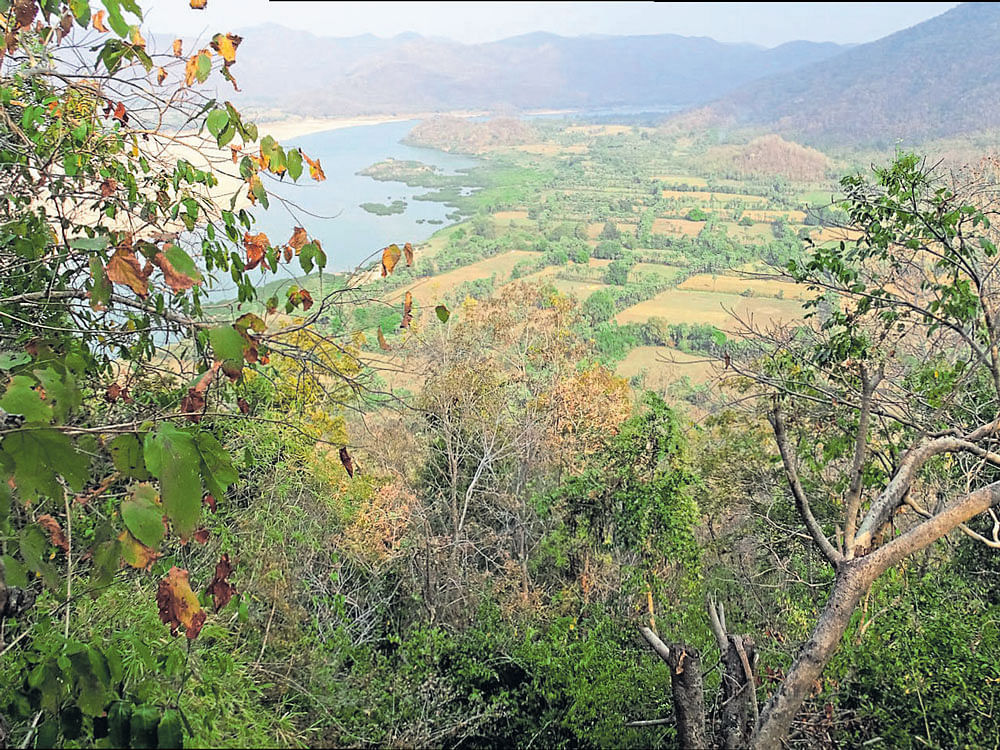
The Eastern Ghats are one of the least explored natural landscapes of India. Stretching about 1,750 km north to south, the range begins from central Odisha, continues through Andhra Pradesh and Telangana, before culminating at the Sirumalai hills facing the Western Ghats near Madurai in southern Tamil Nadu.
The Eastern Ghats still contain large contiguous stretches of tropical deciduous, mixed and semi evergreen forests. Unlike the continuous mountains of the Western Ghats, the Eastern Ghats are broken up into several distinct hill regions by rivers like the 1,465-km-long Godavari and the 1,400-km-long Krishna.
The Eastern Ghats have many deep gorges, notably the Satkosia Gorge across the Mahanadi in Odisha, the Bison Gorge across the Godavari, the Krishna River Gorge across the Krishna, and the Gandikota gorge across the Pennar. Each hill range has its own characteristic features, species composition and diverse human communities. The immense diversity of land forms contributes to the natural beauty and attractiveness of the region.
Home to diverse fauna
The northern Eastern Ghats houses the Papikonda Wildlife Sanctuary, which covers an area of 1,012 sq km, containing mainly moist deciduous and semi-evergreen forests, typical of this landscape. Straddling the Godavari river, the altitude of this sanctuary ranges from 20 m at the river base to 850 m at the summit of Bison Hill, the highest point in the sanctuary. The forests of Papikonda and the northern Eastern Ghats support a rich diversity of fauna.
A number of recent rediscoveries of species such as the Golden Gecko and the Jeypore Ground Gecko have thrown light on the unique biodiversity of this part of the Eastern Ghats. Some other notable fauna found in this region include tigers, leopards, sloth bears, wild dogs, smooth-coated otters, leopard cats, sambar deers, chital and four-horned antelopes. Papikonda Wildlife Sanctuary is also known to support large populations of gaur, and this species is the centre of attraction here.
But all is not well in the northern Eastern Ghats. An analysis of forest change using Geographic Information System (GIS) software reveals that total forest cover across Papikonda Wildlife Sanctuary and its buffer forests decreased from 2,448 sq km in 1991 to 1,799 sq km in 2014 — a loss of 649 sq km in the last two decades. Each year, 28 sq km of forests are converted to non-forest areas on an average. This is significantly higher than the Hansen global forest loss study estimate for the region, a study that used time-series analysis of satellite images to characterise forest extent and annual change in forest cover globally.
Underlying reasons
The Hansen study estimated a yearly conversion of 2.3 sq km of forest cover in the same region between 2000 and 2014, nearly 10 times lower than the rate of conversion indicated by this author’s analysis. In any case, the rapid conversion of forest to non forest through infrastructure development, agriculture, and other anthropogenic activities is evident in the region.
An investigation into the underlying reasons for forest transformation through stakeholder interviews indicate that over-extraction of forest resources, podu or shifting cultivation, agriculture, illegal tree felling, forest plantations and bamboo cutting have been primarily responsible for a majority of forest conversion.
Podu is a form of swidden agriculture, also known as shifting cultivation, practised in the northern Eastern Ghats by the indigenous Konda Reddi and Koya communities over the past several millennia. However, most have taken to settled agriculture on permanent lands allotted to them on the hill slopes since the 1990s and more recently following the Scheduled Tribes and Other Traditional Forest Dwellers (Recognition of Forest Rights) Act, 2006. In these permanent lands, they cultivate millets, alasande (cowpea), black gram, etc.
Settled cultivation of paddy and chilli, which is also practised in the hill valleys and wherever flat lands are available along River Godavari, is more permanent and has probably contributed more to deforestation in the northern Eastern Ghats. In contrast, podu cultivation was only practised in a particular forest patch for a few years, following which the plot would be abandoned. This resulted in a semi-permanent forest conversion; forests in these areas are slowly regenerating.
Godavari river also acts as a conduit for the illegal transport of logged trees by outsiders, who have been known to cut trees and dump them in the river, to be retrieved safely downstream outside the Ghats. The river is also the site for the construction of a large dam right outside the sanctuary’s boundary. This has resulted in significant forest conversion at the construction site and will additionally submerge several hundred hectares of forests in and around Papikonda Wildlife Sanctuary after its imminent completion.
Thriving landscape
All these changes are putting the unique biodiversity of the Eastern Ghats at risk, even before it is fully documented, and its value understood. However, there is hope for Papikonda and the northern Eastern Ghats. Nearly 80% of the landscape is still covered by natural vegetation including large patches of tropical deciduous and semi-evergreen forests.
Several new species discovered in the landscape recently and records of the presence of a tiger population point to the rich biodiversity thriving in these forests.
A study undertaken by the Ashoka Trust for Research in Ecology and the Environment in 2015 recorded 145 species of birds belonging to 58 families. Malabar Pied Hornbill and Alexandrine parakeet were the two near threatened species recorded. Some of the other rare birds encountered here are the Malabar trogon, Ruby-cheeked sunbird and Jerdon’s baza.
Earlier studies have reported the sightings of other globally threatened species such as the pale-capped pigeon and Malabar pied hornbill, in and around Papikonda. The role of the northern Eastern Ghats in harbouring and protecting biodiversity is also being widely recognised in recent years, particularly with the declaration of Papikonda Wildlife Sanctuary as an Important Bird Area.
(The author is with ATREE, Bengaluru)